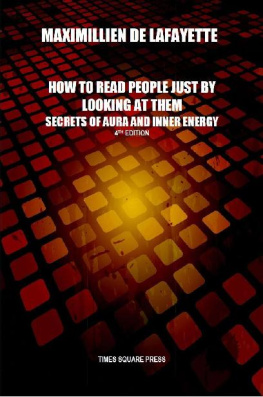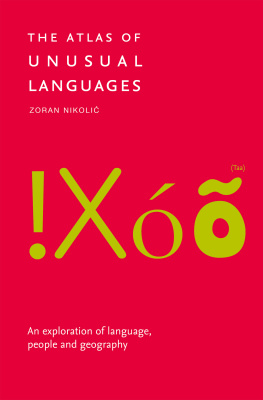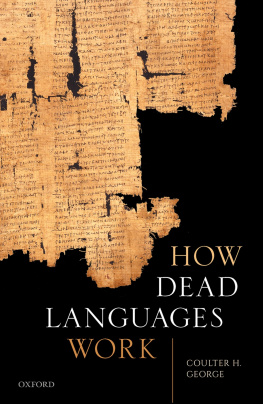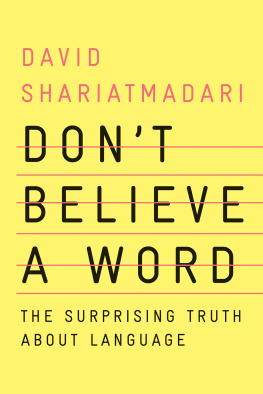LEARNHOW TO SPEAK THE ANUNNAKI LANGUAGE
Comparison with Akkadian, Sumerian, Assyrian,
Arabic, Hebrew, Aramaic, Phoenician, Chaldean,
Hittite, Ugaritic, Babylonian
Volume I
2 nd Edition
A SET OF 4 VOLUMES
Ahiramou malki wa suleimani hikmat a-lina nouri-hum
Inna uzzuri-ya malkut salamtu-yashalomou kadousi merkaba-tu anu
Inna naja amri kudru
sala uzzu riba-ya anu
malaki rana ahani-ya
sadirat nahri gafar kadri.
G.33. rahab. Rama dosh
Copyright 2011 by Maximillien de Lafayette. All rights reserved.
No part of this book may be used or reproduced by any means, graphic, electronic, or mechanical, including any and/or all of the following: photocopying, recording, taping or by any information storage retrieval system without the written permission of the author except in the case of brief quotations embodied in critical articles and reviews.
Published in the United States of America.
Printed by Times Square Press.
Date of Publication: April 14, 2011.
Maximillien de Lafayette's books are available in 2 formats:
1-Amazon Kindle edition at www.amazon.com
2-In paperback at www.lulu.com
http://stores.lulu.com/maximilliendelafayette
Author's website:
www.maximilliendelafayettebibliography.com
Listen to his radio show on the Internet: "Maximillien de Lafayette Show" at www.blogtalkradio.com Click on "Archived" to see/hear all the episodes.

Cover of Volume 1
On the cover: Pedestal of god Nuska, Temple of Ishtar, Ashur, circ. 12431207 BC
Dedication and Gratitude
_____________________________________________
To the honorable teachers, masters and Ulema
Who showed us the way
Opened our eyes
And filled our essence with wisdom, knowledge
And goodness.
Ulema Win Li
Ulema Farid Tayarah
Ulema Swami G. Gupta
Ulema Cardinal Bertholli
Ulema Monsignor J. Maroun
Ulema Rabbi Mordachai
Ulema Rabbi Sorenztein
Ulema Marash Anu Sherma
Ulema Cheik Al Bakri Bin Ani Sufian
Ulema Cheik Al Huseini
Ulema Lama Govinda
Ulema Saddik Ghandar Ranpour
Ulema Jean-Robert Sabalat
Ulema Dr. J. Chen
Ulema Amir N. Nejad
Ulema Cheik Imad Turqi Al Bakr Al Rifai
Ulema Imam Salah Al Badri Al Naamani
Ulema Dr. K. Openheimer
Without their guidance, inspiration, and blessing, this book would have remained words, phrases, and shadows in my drawer.
LEARN HOW TO SPEAK THE ANUNNAKI LANGUAGE
Dictionary, Vocabulary, Conversation
Comparison with Akkadian, Sumerian, Assyrian,
Arabic, Hebrew, Aramaic, Phoenician, Chaldean,
Hittite, Ugaritic, Babylonian
Volume I
2 nd Edition
A SET OF 4 VOLUMES
Maximillien de Lafayette
*** *** ***
TIMES SQUARE PRESS
New York. Berlin.
2011
Note on Pronunciation
________________________________________
a... Like in Matthew.
...Acute accent.
... Grave accent.
....Like in sash. Put a heavy accent on the sh.
i ....Like in kiwi.
u ...Like in full.
h ...Like in Jose, in Spanish. Put a heavy accent on the J.
... Like Espaa in Spanish. It sounds like nya.; Espanya.
*** *** ***
Introduction
_______________________________________
Anakh: The Anunnaki language
I. Definition and introduction
II. A specimen of the Anakh language
a-Genesis according to the Book of Rama Dosh
b-Transliteration of an Anakh text from the Book of Ramadosh
c-Translation of the text from the Book of Ramadosh
III. Anakh words in Semitic and ancient non-Semitic languages
________________
I. Definition and introduction:
Anakh is the language of the Anunnaki who descended on Sumeria and Phoenicia according to the Ulema.
It is of an extraterrestrial origin. Ulema Al Bakr stated that it was used by early human beings who lived on the Island of Arwad, in Tyre, Sidon, Byblos and Mu. He added that from the Anakh derived the primitive languages of the Near East and the Middle East.
Anakh was never made public. It remained a secret language known only to the Ulema, and later on to the Allamah.
It sounds Semitic, because of its phonetics. But it is not Semitic at all, said Ulema Ghandar Gupta. It has no grammar, but it has an extremely rich vocabulary and an abundance of metaphoric expressions.
Another Ulema said, that the original name of Jehovah or Yahweh derived from the Anakh word Yaw. Also, a considerable number of Akkadian and Sumerian words that appeared in the Sumerian Epic of Creation and the Bible derived from Anakh. Around 569 A.D., a group of Ulema (Munawareen) in the Near East (Non-Islamic scholars) compiled an extensive list of Anakh words and phrases.
In 625, A.D., two leading figures of the Ulema brotherhood wrote the Book of Rama-Dosh; a compilation of Anakh terminology, a lexicon, and Kiraats (Readings). Ulema AL Bakr stated that the Ulema are not member of a religious group. They are neither Muslim nor members of any organized religion.
In fact, they were persecuted by the companions of the Prophet Muhammad, and were expelled from the Arab Peninsula. They found refuge in Cyprus and Marseille.
But the honorable Ulema was quick to point out that the early Sufi masters, poets and Sufi trance dancers were Ulema.
He added that Ulema should not be confused with the Islamic Ulema who teach Islamic law, or with the Allamah who were the leading Islamic figures of science and letters in medieval times.
Farid Tayarah, an Ulema himself, and a former head of a Masonic Lodge stated that the Anakh was used during Masonic sessions and services. He added that a considerable number of Masonic words and expressions are pure Anakh, especially those words referring to levels and degrees in Freemasonry, and initiation ceremonies.
Many of the original words of this language, as well as numerous linguistic derivations are included in this book.
Explore it in this book.
But approach it with an open mind, and an open heart.
II. A specimen of the Anakh language:
A specimen of the Anakh language, taken from the Book of Ramadosh. Below is an excerpt from an Anakh text on Genesis, I translated decades ago:
Genesis according to the Book of Rama Dosh.
The Anunnaki maintain that the universe was created from a molecule smaller than the tip of a pin, taking less than three seconds. The language is metaphoric, the science is highly visible - much like our own Genesis whose language covers the Big Bang and the Theory of Evolution.
a- Transliteration of an Anakh text from the Book of Ramadosh:
.Inna bida rama dosh kali kilma
wa falki uzzu ina wa anru dani (Dounia)
.u rama dosh khalki shama u erdi
.wa erdi naya shak-lu fari mara anu absi
u rama dosh liwa basra erdi
.u rama dosh shadah ilmu erdi rou'a min bashri
.u rama dosh khalka belti isama shavah
.wa leilu wa fagru subhi yomou badri.
.u hawwa marki-ya kila la-ma nazri. U rama dosh kali na inna erdi wadoo kourba shamsi, wa noura khalku, wa noura barku. u hawwa basri noura gulba.
.u hawwa ma dari akhlu jisma ma khalki sartu inaya mayi, rama dosh kali da jamu ma'aa rama faku erdi wa zahra erdi u hawwa basri noura gulba.
.u hawwa ma dari ma'uu u rama dosh daa'ghasbu ma'ii inna boukari hawwa nasmu-ya, w hawa'u nafsuru, u hawwa basri noura gulba.
Next page







